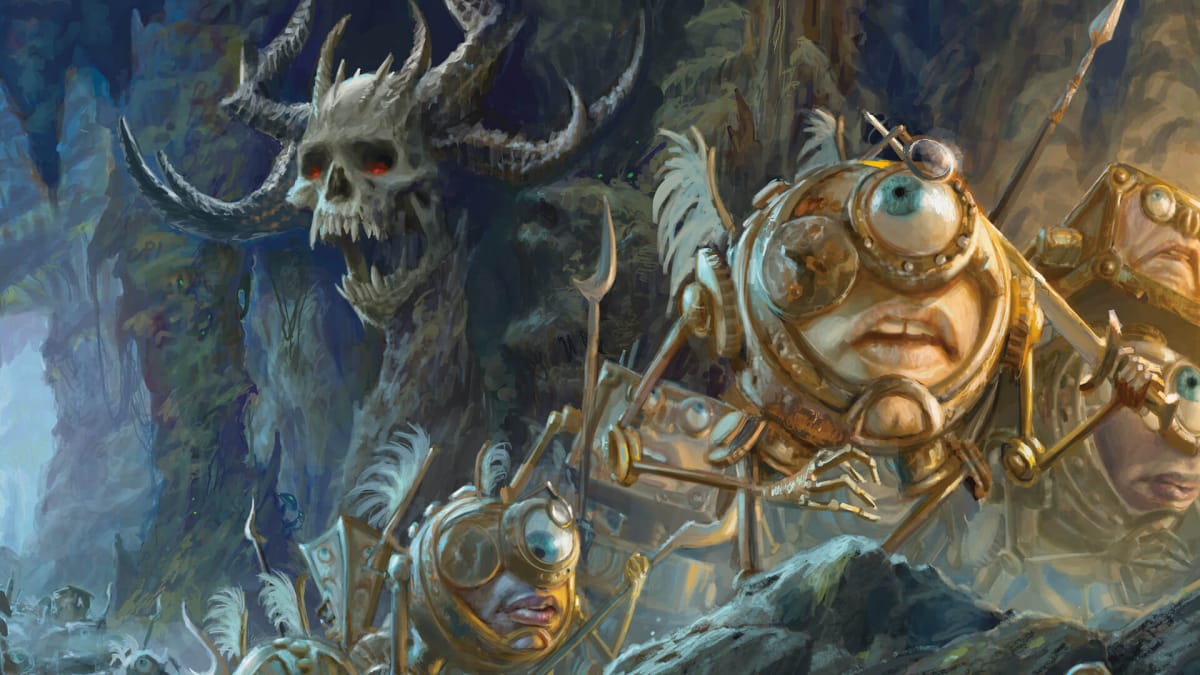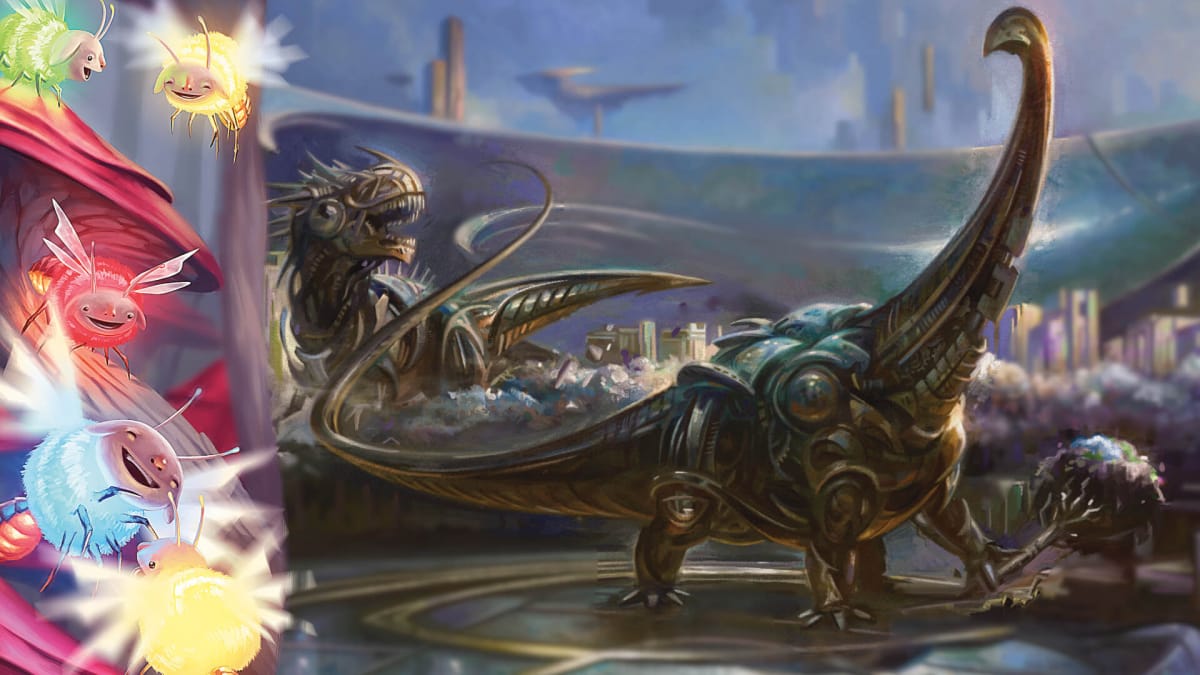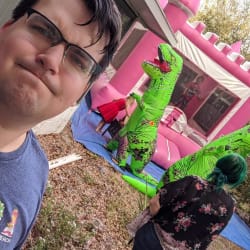Leaving the Material Realm players can go out to Wild Space, and even further to the Radiant Citadel. In the realm that connects all realms sits Sigil, a city on the inner ring of a torus that connects every setting in the world of Dungeons & Dragons. This is the setting of Planescape.
What does Planescape come with?
Planescape is a new three-book collection being released on October 17th, with early access available on D&DBeyond starting October 3rd. This release will come with an adventure book called Turn of Fortune's Wheel, a Source Book called Sigil and the Outlands, and a bestiary of monsters called Morte's Planar Parade.
If you remember how Spelljammer did it these three books will come in a slipcover titled Planescape, it will also come with a DM Screen. There's a special easter egg with the alternate art for this release. The artist, Tony DiTerlizzi, is the same artist who made the majority of the art for the original Planescape release.
We got to hear from Co-Lead Designers, Wes Schneider and Justice Arman, about the creation of Planescape for 5th Edition D&D.

What is Planescape?
"It's only everything" - Wes Schneider
Schneider began the presentation by taking us all back to the original Planescape released in 1994. Back then there were so many different worlds that Dungeons & Dragons focused on. Planescape was the excuse to get away from the Sword Coast, Dragonlance, or Greyhawk and go explore the different planes of existence.
While the Radiant Citadel takes you between material realms, Spelljammer takes you out into wild space, whereas in Planescape you have all of the planes as visitable destinations. "It's all of that, and now your characters can adventure in that!"
Arman explained that there were a lot of exciting things that took place while bringing such an important setting to the present day. He especially loved reading over the original texts and seeing what wacky concepts were being created back in the 90s.
An interesting thought that Schneider brought up was how ahead of its time Planescape was in the 90s for creating such deep content around the idea of a multiverse. Back then you'd have a difficult time conveying to someone, especially someone who isn't a player what that multiverse is.
Now we've got AAA franchises as well as indie productions like the Marvel Cinematic Universe and Everything Everywhere Always At Once focusing on the ideas of a multiverse and using that in a variety of interesting ways.

Planescape: Sigil and the Outlands
Dungeon Masters will be able to use Sigil and the Outlands as a launch pad for learning about Sigil, the worlds that it connects to, and what's beyond the borders.
Sigil is a city built on the inside of a torus floating between all of the realms. It's a ringed city ruled over by the Lady of Pain. Also within Sigil are a variety of factions.
These factions each have their own ideology about how life should be lived and how the world should be. While some factions are returning from the original setting others have been dissolved or even merged to form new factions.
Inside this city are gates that lead to each of the different multiversal planes. With sixteen gates in total, the DM will also learn about the towns that surround these gates. We got to see the art of Gate Town Torch as well as Gate Town Excelsior.
The Gate Towns are all regionally affected by the world that they're connected with. An example of this that we were given was the Gate Town that borders Mechanus, home of the Modrons, which has a synchronizing metronome effect.
Blacksmiths will find that their hammering falls into a steady beat and rhythm while those making their way through the street will match footfalls with their neighbors.
DMs will also learn about Mimirs, floating skulls that will follow parties around that work as repositories of information about each of the realms. It's a great way for the DM to be able to lend their voice and knowledge of different planes to the party without breaking the illusion of the table.
Planescape: Turn of Fortune's Wheel - Adventure Through The Multiverse
Turn of Fortune's Wheel is an adventure that will begin at level 3 as the party wakes up in the mortuary on Sigil. There's something strange going on with the party as they find themselves out of touch with the rest of the world.
Discovering the origin and solving this "multi-planar glitch" will be the driving force of the campaign. Through your travels, you'll visit the Fortune's Wheel casino, explore the Outlands, and even step into a few different planes.
This glitch isn't only for narrative purposes either. If your character dies or experiences something drastic they'll return moments later… but as a different incarnation of themselves. Schneider explained that this might be a minor change, like returning with a mustache, or it could be that a party member comes back as a completely different class or species.
This campaign begins at level 3 and extends to level 10, but once you've reached level 10 and fixed what is causing you to glitch you'll get catapulted to level 17 for the conclusion of the campaign.
This is an extremely interesting way to factor in some high-level play, something that quite famously hasn't been published by WOTC in a while.

Morte's Planar Parade - Monsters To Throw At Your Players
Morte's Planar Parade is the Monster Manual for Planescape. Inside this book, you'll find stat blocks and art for the different extraplanar entities that your players will come up against in the campaign.
Creatures included here will appear in different planes that the party will visit or be from Sigil and the Outworlds. There is also a section on Planar Influences that will show you how you can modify a creature to make it fit into Planescape better.
"What traits might a unicorn take on if it's been grazing near the portals of the nine hells?"
Some of these creatures that we were introduced to included an Etin who has been living near the Bestial plane resulting in his two heads becoming that of animals, an Equinal (humanoid horse), Sunflies, a new demon called Demodand Shator, and Chronopsis the Time Dragon.







